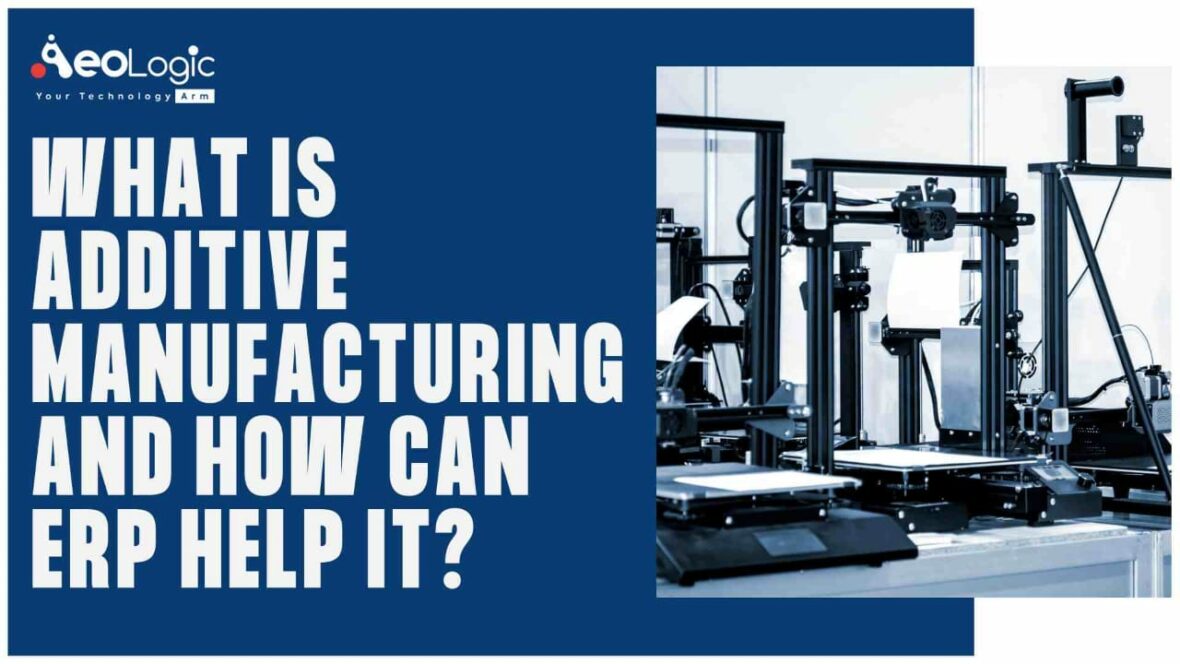Are you already using additive manufacturing (AM)? You need to be.
Have you ever heard of additive manufacturing meaning before? If yes, do you know that this technology has been around for decades now? In today’s blog, we will primarily discuss what is additive manufacturing and how can ERP help it? We also discuss what is additive manufacturing? and why additive manufacturing is important.
Let’s begin!
Table of contents
- Introduction
- What is Additive Manufacturing?
- How Additives Manufacturing Work and Processes?
- How can ERP help Additive Manufacturing?
- Top 10 Benefits of Additive Manufacturing
- How Additive Manufacturing Differs from the Traditional Manufacturing Process?
- Why Additive Manufacturing is Important for the Future of Industry?
- Conclusion
Introduction
Additive manufacturing is a new innovation in the manufacturing industry that is famous for its “other name”, 3D printing. However, do you know that this technology has been around since the 1950s? In the 1950s, the concept of additive manufacturing was introduced in the manufacturing industry. Hence, this technology is used to create objects by adding material while producing goods.
So, the basic concept of the additive manufacturing process is; adding material while producing goods. The traditional manufacturing method uses raw material by carving and shaping by cutting parts of it in such a way until the form is there. Meanwhile, additive manufacturing is the opposite pole. It creates the structure of the object by adding thousands of minuscule layers and fused during the whole process.
Also Read: Why Is CRM Software a Game-changer When It Comes to Delivering Better Customer Experiences?
What is Additive Manufacturing?
Additive manufacturing is a technology that allows for the creation of a three-dimensional object based on a digital CAD model. A 3D printer builds an object from the ground up with materials, typically some kind of plastic material. 3D printers are used to create prototypes and end products in a wide range of industries including the medical, industrial, and aerospace sectors.
However, additive manufacturing uses layers upon layers of fine building blocks to create customized designs. Using the CAD software and a good printer the items can be created with several materials including nickel-based metals and plastics.
A company needs the appropriate hardware and software incorporated into its systems in order to print 3D objects. A computer program’s imagery and models, or simply scanned drawings, can be used to make 3D printed items. A company will require a 3D printer as well as the necessary integrations to make it useful for producing the required goods or items in order to enable additive manufacturing.
Also Read: The Role of AI in Education And Learning: Just Promises Or Revolution
How Additives Manufacturing Work and Processes
There is a big variation between the function of additive manufacturing and traditional production methods. In additive manufacturing, more new materials are added than removed on a regular basis. Additionally, the traditional manufacturing process typically entails modifying or carving raw materials and shaping them by eliminating portions of the item to create the desired shape.
Nevertheless, the additive manufacturing approach is fundamentally different from the traditional approach—or, in some ways, the exact opposite. Adding hundreds of tiny layers, which are then merged to create completed things, is how additive manufacturing produces its products. A computer is needed for the manufacturing process, along with specialized software called CAD, which tells the printer what shapes and layers to print.
Also Read: Information Technology to Support the New Values of the EV
How can ERP help Additive Manufacturing?
ERP systems are designed to help manufacturers streamline their processes. Many administrative tasks in a company are sometimes automated with the help of an ERP system. It is important for any business to have a good ERP system for data security. This ensures that the company can easily access this information at any given time and can make better decisions. In addition, ERP systems can help a business become more efficient and cut costs.
The ERP system helps the organization plan for inventory through predicting what customers will buy in the near future. Additionally, an ERP system that supports additive manufacturing might force businesses to check their production-process machinery. When using additive manufacturing technology, the ERP system can help with production.
Also Read: Importance of Digital Asset Management in the Retail Industry
How Additive Manufacturing Differs from the Traditional Manufacturing Process
In traditional manufacturing, manufacturing companies require a large volume of raw material and it takes an extensive amount of time to produce a finished product. 3D printing in comparison is additive. Hence, due to the incremental nature of this process, more accurate prototypes can be made in less time.
3D printing also allows a company to customize its products and make them better than ever before. A great example of this is the first 3D print (hand prosthesis for children). Traditional manufacturing methods would not have been able to create such an intricate prosthesis with the same detail that 3D printing can provide.
Also Read: The Role & Benefits of ERP in Supply Chain Management
Top 10 Benefits of Additive Manufacturing
- Small production runs are often quicker and cheaper.
- It is the only thing that helps with new AI-driven design methods.
- You don’t need to have as much stock on hand.
- The price of getting in keeps going down.
- You’ll spend less on waste and energy.
- Prototyping costs less money.
- It is the only one that can hold lattice structures.
- It’s easier to make new copies and improve old parts.
- You can make parts work better.
- You can turn a group of parts into just one.
Also Read: How Technology Is Changing the Future of Logistics
Why Additive Manufacturing is Important for the Future of Industry
Today’s manufacturing process is changing at a rapid pace as we enter the era of additive manufacturing. There are many reasons why additive manufacturing is important for the future of the industry.
- The first reason is that it is cheaper. With additive manufacturing, we can make products that are more complex than those we could make in the previous era.
- The second reason is that it is more environmentally friendly. In the past, factories would have to use a lot of resources to make a product. Now, they can make a product using less material and less energy. They can even make a product that is recyclable.
- The last and third reason is that it is more efficient. Traditional manufacturing methods are very wasteful. With additive manufacturing, you can make a product that is better than the one that you could make before.
Also Read: 10 Ways to Use Artificial Intelligence to Improve Business Processes
Conclusion
In the end, traditional manufacturing and additive manufacturing are very similar, and an ERP system can help both industries in a lot of ways. All of the modules of a traditional ERP system, from finance and engineering to MRP and inventory, will be very useful for an additive manufacturer as well.
If you want to keep and improve your business’s competitive edge, contact the Aeologic team to get started on your ERP journey.
FAQ’s
How do I know if I should use additive manufacturing?
If you’re looking for a new product, you’re more likely to find it using additive manufacturing. Because you can create a product exactly as you want it, you can produce small quantities quickly and inexpensively.
What are the disadvantages of Additive Manufacturing?
These are expensive materials that are much more expensive than the materials used in traditional manufacturing. This makes it less likely that people will use additive manufacturing.
Disadvantages include the high cost of the equipment and the high amount of time it takes to produce an object.
How can ERP help with Additive Manufacturing?
ERP can help with additive manufacturing. Hence, this allows companies to make better decisions, such as when to order materials and when to change suppliers.
An ERP system can assist additive producers in tracking a 3d item from the raw material through manufacturing, shipping, and delivery while guaranteeing a safety record of each item.
What are some examples of additive manufacturing?
Some examples of additive manufacturing include the ability to print a 3D-printed house, a prosthetic limb, and a tooth replacement. Binder jetting, also known as material jetting or inkjet powder printing, is among the most common additive manufacturing types.
Our services: Application development






